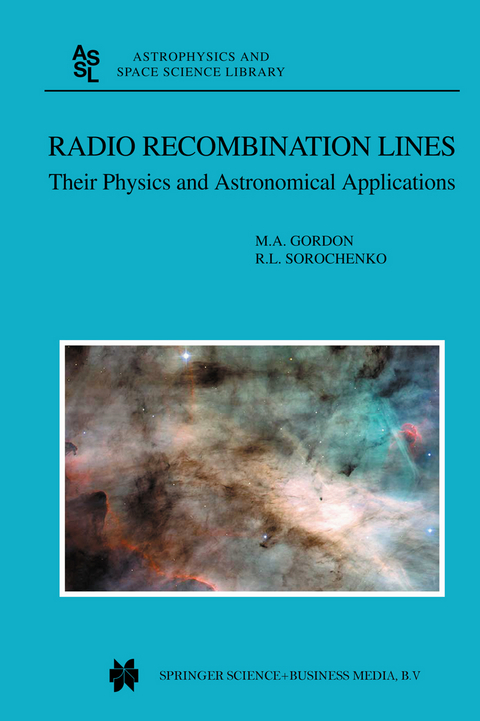
Radio Recombination Lines
Springer-Verlag New York Inc.
978-1-4020-1016-3 (ISBN)
1 Introduction.- 1.1 The Cosmos as a Laboratory.- 1.2 Spectral Lines in Astronomy.- 1.3 The Bohr Atom.- 1.4 Spectral Lines in Radio Astronomy.- 2 RRLs and Atomic Physics.- 2.1 The First Surprising Results: The Absence of Stark Broadening.- 2.2 The Broadening of Radio Recombination Lines.- 2.3 Intensity of Radio Recombination Lines.- 2.4 The Range of RRL Studies.- 2.5 How Many Atomic Levels Can Exist?.- 2.6 Summary.- 3 RRLs — Tools for Astronomers.- 3.1 Physical Conditions in H II Regions.- 3.2 Ionized Hydrogen and Helium in the Galaxy.- 3.3 Exploration of the Cold ISM by RRLs.- 3.4 RRLs from Stars and Stellar Envelopes.- 3.5 RRLs from Extragalactic Objects.- A Constants.- A.1 Miscellaneous Constants.- A.2 Rydberg Constants.- A.2.1 Reduced Mass.- A.2.2 Table of Rydberg Constants.- B Tables of Line Frequencies.- B.1 Frequencies Below 100 GHz.- B.2 Frequencies Above 100 GHz.- B.3 FORTRAN Code for Fine-Structure Frequencies.- C Supplemental Calculations.- C.1 Early Estimates of Stark Broadening.- C.2 Refinements to the Bohr Model.- D Hydrogen Oscillator Strengths.- D.1 Population of Atomic Sublevels.- D.2 Calculation of Oscillator Strengths.- D.3 Radial Matrix Integrals Code.- E Departure Coefficients.- E.1 FORTRAN Code for Calculating bn Values.- F Observational Units.- F.1 What Radio Telescopes Measure.- F.2 How Radio Telescopes Measure.- F.2.1 Sources smaller than the beam size.- F.2.2 Sources larger than the beam size.- F.2.3 Antenna temperature scale.- Author Index.- References.
| Erscheint lt. Verlag | 30.11.2002 |
|---|---|
| Reihe/Serie | Astrophysics and Space Science Library ; 282 |
| Zusatzinfo | XVII, 358 p. |
| Verlagsort | New York, NY |
| Sprache | englisch |
| Maße | 155 x 235 mm |
| Themenwelt | Naturwissenschaften ► Physik / Astronomie ► Astronomie / Astrophysik |
| Naturwissenschaften ► Physik / Astronomie ► Atom- / Kern- / Molekularphysik | |
| ISBN-10 | 1-4020-1016-8 / 1402010168 |
| ISBN-13 | 978-1-4020-1016-3 / 9781402010163 |
| Zustand | Neuware |
| Haben Sie eine Frage zum Produkt? |
aus dem Bereich


